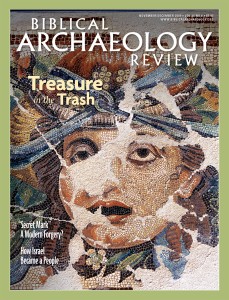
“You never get too good for the basics.” Some such caution will be familiar to anyone who has trained in a sport, musical instrument or language. We understand that we will have to get through the basics at the start. The hard part is realizing, months or years into training, that we can never leave behind those building blocks: working endlessly on balance and form; constantly practicing scales; struggling with the unsexy conjugation of verbs.
It is the same with academic work. Important insights have originated in the teaching of introductory courses. That is where we come to grips over and over again with the most basic tools and evidence of our disciplines. Each year, as our specialized research and writing progress, we return to the basics with new eyes. And the constant questioning of these foundations, by us and by our students, can expose weaknesses in the fundamentals. I suggest that one of our most rudimentary categories, ancient “Judaism,” could benefit from rethinking.1
In the study of ancient Judea, there is no more basic category than “Judaism.” It seems obvious: ancient Jews practiced Judaism. Since there was a Greek word, Ioudaismos, which looks like “Judaism,” some scholars have suggested that Jews were unique among the ancients in embracing an –ism (there was no Romanism, Athena-ism, Isis-ism, etc.). Our debates have been focused on whether we should speak of early, middle or (surely not) late Judaism, rabbinic, Palestinian, normative, common or sectarian Judaism. And should it be Judaism, or Judaisms, as some scholars have proposed?
Already a library member? Log in here.
Institution user? Log in with your IP address.

